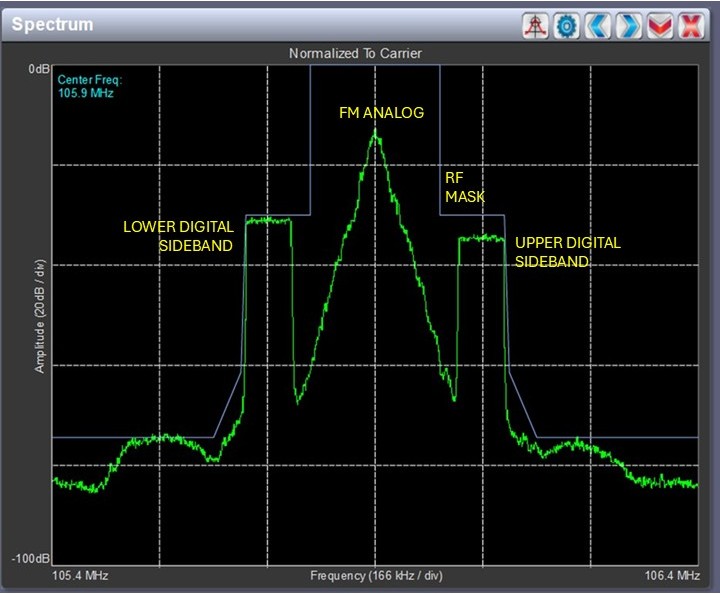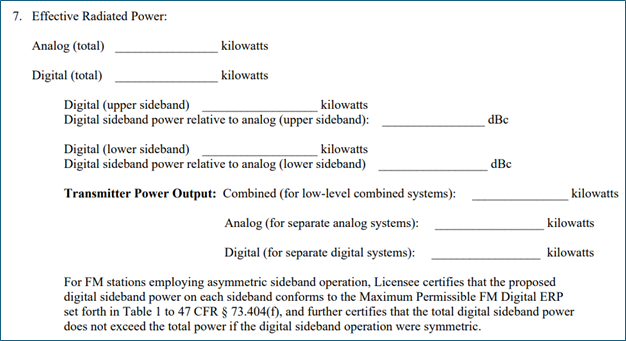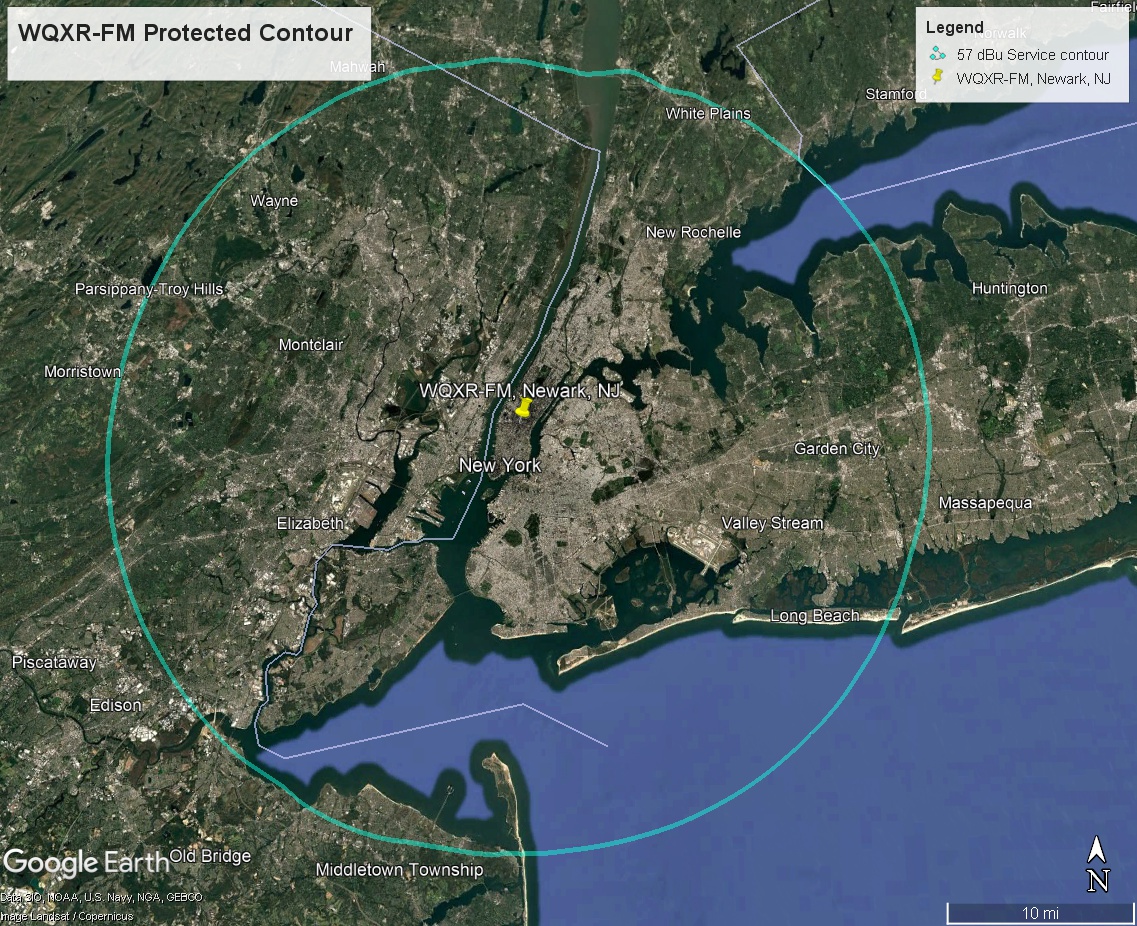Asymmetric digital sidebands are a powerful tool now available to FM-band digital radio broadcasters. The power in one sideband is reduced to protect a nearby first-adjacent channel signal and the power in the other sideband is set to maximize digital coverage. The spectrum plot below illustrates asymmetric sidebands, showing an FM-band digital radio signal (including the analog simulcast of the main channel audio) where the upper digital sideband is at a reduced power level compared to the lower digital sideband.

Spectrum plot of New York Public Radio (NYPR) station WQXR operating with asymmetric sidebands.
(SOURCE: NYPR, JULY 2025)
Here are the steps to consider and then apply for operation using asymmetric sidebands (taken from FCC rule §73.404 IBOC DAB operation):
1) Determine the digital radio station’s F(50,10) field strength contour at the upper and lower first-adjacent station’s analog 60 dBu F(50,50) contours (+/- 200 kHz with respect to frequency of digital radio station). This typically can be done using RF propagation analysis software.
2) Refer to Table 1 (reproduced below) in paragraph (f) of §73.404 to determine the maximum power for each digital sideband based upon the results of step one. Note that the ERP values in this table (second column) are for each sideband individually, where -13 dBc is the per-sideband power for a station operating with the maximum allowable digital power of -10 dBc and -17 dBc is the per-sideband power associated with operation at the blanket authorized digital power level of -14 dBc.

3) Once the maximum power level for each sideband is established and assuming that the digital radio station’s transmitter can generate the required power levels, notify the Commission of the station’s asymmetric sideband operating parameters using FCC Form 2100, Schedule 335-FM: https://www.fcc.gov/media/media-bureau-forms-page. The form must be filed electronically, an excerpt is also included below.


Excerpt from FCC form 2100-335-FM for asymmetric sideband operation.
4) Note that stations operating on channels 296-300 (107.1-107.9 MHz) must seek an experimental authorization to use asymmetric sidebands. This is due to concerns from aviation equipment manufacturers operating in the VHF band immediately above the FM band of possible interference from digital sidebands. NAB and Xperi are currently working with these aviation interests to establish appropriate interference parameters.
Just last month, New York Public Radio (NYPR) station WQXR-FM (105.9 MHz, Newark, N.J., transmitting from the Empire State Building, class B1, 610 W) began operating with asymmetric sidebands and anecdotal evidence thus far suggests that in-building penetration of the digital signal is improved and lasting throughout the day in locations where it would previously blend in and out of analog. A map of the WQXR-FM service area is included below, taken from the FCC’s database here.
As part of their 2100-335-FM filing, NYPR submitted an engineering statement that includes the contour analysis done to establish the maximum power level for each digital sideband. This serves as a good example of the extensive effort needed to complete an asymmetric operation filing.


